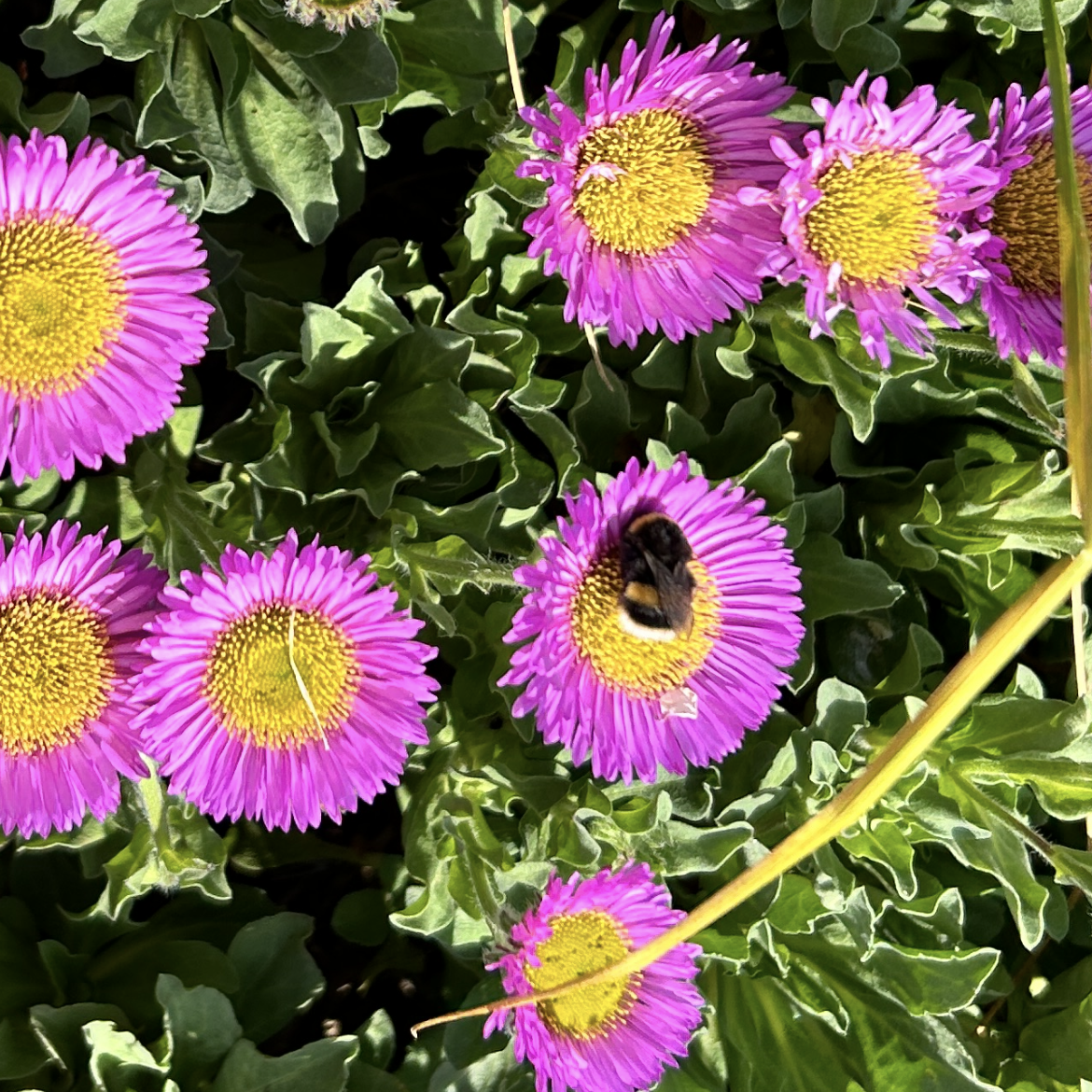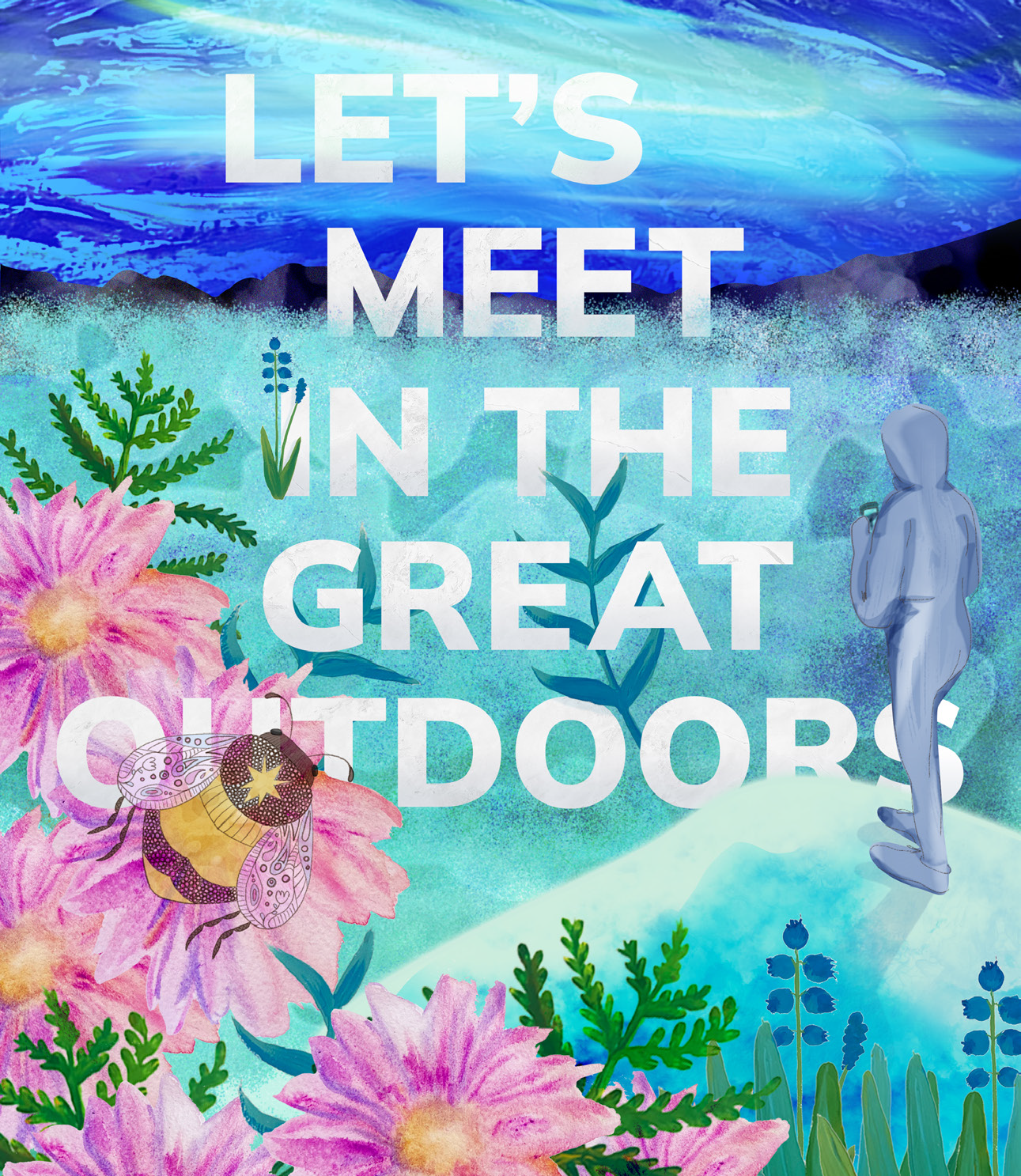Will there always be meadows?
Ninety-eight percent of wildflower meadows have disappeared since the second world war*.
These meadows are the living playground of our precious insects and bees - including insects that bite.
Insects are very much a part of this natural canvas.
I met an avid photographer giving a talk on wildflower meadows this week.
He had gathered his audience of enthusiasts on the threshold of a treasured area of the UK - one with no less than 142 Sites of Special Scientific Interest.
On offer was a showcase of stunning photography. A fascinating peek through the aperture of over half century of wildlife study.
Paul’s show was mesmeric. Fluffy moths and sensational butterflies, field mice trapeze artists and even a clover munching Bambie. Every living thing was going about it’s day with purpose. Let’s not forget the slithering snakes - heath meadow adders ‘ave it good when they come out of their perfumed hidey-holes to bask in the sun.
Theses meadows were ephemeral tapestries of a glorious whole - an entity.
Meadows are precious and precarious, I wondered how they could survive without some sort of collective stewardship or intentional effort.
Humanity was not referenced, once. Indeed, Paul’s picture show did not include a single human.
How did they show up to complete the reality? What did this audience wear out in-the-field, right now?
After the show, I asked the gardeners, the photographer, the naturists, the beekeeper…
(Unlike Marilyn Monroe, none of them confessed to wearing Chanel No.5!)
I asked if anything bothered them when they were out tending their wildlife patches and soil beds, observing and absorbing the wonder of growing and living things.
They talked about different biting insects.
Each had their techniques for “fending off the blighters” so they might get on with the job of focus and without prickly distraction.
These techniques included petrochemical-heavy clothing and wearing fertilizers like DEET.
Are plants affected by DEET?
We know they are affected by run off from agricultural land smearing with toxic enhancements?
Samuel Gertler, an American developed DEET for army use after the lessons learnt from jungle warfare. The first tests were on fields, the second tests were on humans. The application has been slowly watered down since and nowadays concentrated ‘bug juice’ is banned and hard to come by. Nature lovers can however, still find a plethora of DEET offered up at their convenience. And sadly, none of the outdoor lovers in the room mentioned the application of natural alternatives…
What’s the difference between spraying directly on fields without standing in them and then spraying it directly on our skin then standing in fields?
Are we spraying ourselves with the very thing that kills the living species we so cherish?
White tailed bumble bee getting BZzy with it!
Will there always be flowers for those who want to see them?
I wondered what the insects in the images projected on the Gardeners’ Club screen might think of the waft of petrochemicals from those who get up close and personal covered in insect repellent. Maybe they recoil and scurry off quickly. Maybe their eyes smart in shock. How do they recover after being overpowered by such an unnatural choice of aftershave!?
Do we continue to annihilate their habitat? Reap what we sow when we spray and pray?
It’s not just warfare or agribusiness that is relevant in history, we all play our part.
70% of our biome is left. Hares are rare.
Cornflowers are beautiful weeds, birdsfoot trefoil and corn marigolds create ideal conditions for a “Bloomin’ Loveliness and BZzing Soundscape” which translates to a rich variety of small and significant enabling pollinators. As a basic equation that equals good food and nutrition for humankind.
Discover a world of beautiful difference, be it spring meadow, summer meadow or heath meadow.
We can look at what is growing and make space for that and find reward in the element of nature’s surprise.
Kaleidoscopic-coloured bugs and flies (all flies have 1 set of wings), owls, shrews, fieldmice, deer, grasshoppers, bees (they have 2 sets of wings), butterflies, dragonflies, moths - what a delight to encounter!
Let us all thrive.
‘Tis time for tick season and mozzie hour too will soon clock-in.
We can see abundance everywhere when we turn to look, when we decide to see.
Perhaps you already know the components that make up what you are wearing?
Perhaps you cover up kindly and stop them ‘getting to you’ in the first place?
If you don’t, you can unfurl this knowledge with a Mozzie Cozzie … right after someone suggests you go for that long dog walk you weren’t quite expecting…full-coverge, stealth mode in under a minute.
When you swish confidently through that heath meadow, maybe you’ll see what you always imagined is possible?
Your sort of heaven just a short trip from home and all right here in this our green and pleasant land.
Do we DEET or do we meet…somewhere in-between?
Appreciating all that is with Mozzie Cozzie - from meadow flowers to desert flowers fed by spring waters.
Venture forth, cover to uncover…look out and look up!
*sourced research paper: “The changing extent and conservation interest of lowland grasslands in England and Wales: A review of grassland surveys 1930–1984”, by R.A. Fuller, published in “Biological Conservation” in 1987 (Vol 40, no. 4, pp 281-300)



